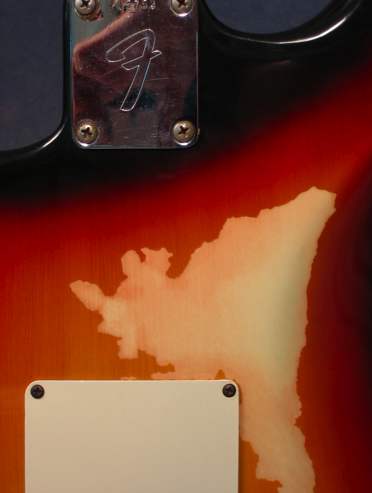Any extreme and rapid temperature change will crack the finish - canned
air sprayed upside-down, pulling from freezer to warm room, dry ice (or
plain old wet ice for that matter). The problem is it will leave you with a
random crackle pattern that bears very little resemblance to a natural
crazing.
The only way I've found to get an accurate crazing is by etching in each
individual line by hand with a razor or Xacto. You can make a half dozen
templates to to follow, running a few consecutive lines of the same
template, then switching to another, spacing them somewhat
sporadically. Then etching in some random lines coming from hardware
and screw points, or diverging from the template lines and following just
parallel for a shorter distance. You just really have to try to mimic the
lines of an existing natural crazing of a similar model if you have one to
reference. Then a relatively light blast of the canned air cold will crack the
finish along those lines, adding in more minor accent cracks between
them. Too much cold at this point can just spiderweb the whole thing
though. Then sometimes buffing or hand rubbing off the harsh etched
edges, rubbing some nose grease and dust from a bookcase, etc.
There's no hard rules and definitely no easy shortcuts to hand etching
that I've every found for a natural crazing look. Many of today's lacquers
are also working against you. They generally have a much higher
plasticizer level than stuff used in the 50's and 60's. Mohawk used to
make a lacquer sold as "production lacquer", or "industrial lacquer" that
had very low plasticizer and was wonderful for touching up and
replicating old finishes. It's hopefully still available under the Star/
Mohawk/Behlen/Valspar merged conglomerate today, but I'm not sure.
It's still certainly doable with other lacquers, but they don't check quite as
easily.
Mike, it's probably Tom Murphy you're thinking of that's well known for
his hand etched crazing. That's who I learned it from, and though I've
tried plenty of other techniques I've yet to find one that works as well.
|



